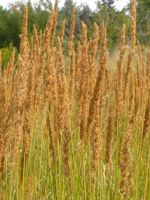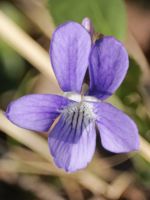Mon-Fri 9am - 5pm Mountain time
Slimstem Reedgrass vs Early Blue Violet
Calamagrostis stricta
Viola adunca
CUSTOM GROW
NOT AVAILABLE THIS SEASON - MIGHT RETURN
Slimstem Reedgrass is a native perennial bunchgrass commonly found in damp meadows, wetlands, and along streams and lakeshores. It thrives in wet, nutrient-poor soils and shows some tolerance to saline conditions. Typically a bunchgrass, it can also spread by rhizomes to form colonies, making it well-suited for soil stabilization, riparian zone planting, and wetland restoration projects.
Slimstem Reedgrass provides valuable cover for small animals and birds, and its dense growth can even serve as nesting habitat for waterfowl in wetland areas. Its seeds offer forage for wildlife, while the tall stems and floral spikes add texture and visual interest to the landscape.
Early Blue Violet is a low-growing native perennial wildflower valued for its striking early-spring blooms. The flowers range in color from vibrant blue to deep violet, often marked with pale highlights and fine white hairs. They provide an important early nectar source for pollinators and serve as a host plant for several fritillary butterfly species.
It spreads by both seed and rhizomes, gradually forming small colonies. Its dark green, heart-shaped leaves add ornamental appeal, and the plant shows some resistance to deer browsing. Early Blue Violet is well-suited to naturalization projects and pollinator-friendly gardens, and has also been used in coastal butterfly habitat restoration in the Pacific Northwest.
Slimstem Reedgrass Quick Facts
Early Blue Violet Quick Facts
Toxicity: rhizomes, fruit, seed poisonous to humans

